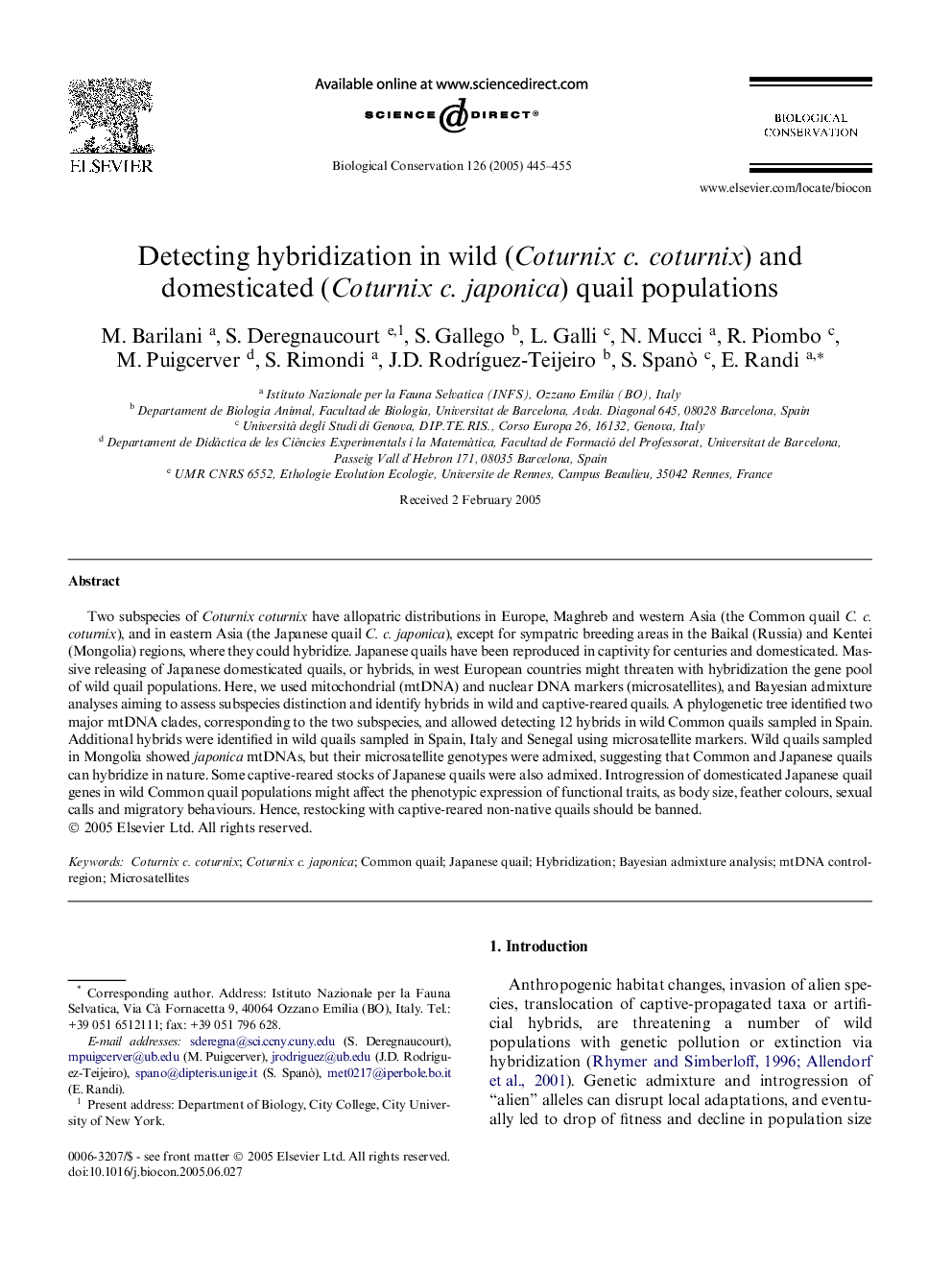| کد مقاله | کد نشریه | سال انتشار | مقاله انگلیسی | نسخه تمام متن |
|---|---|---|---|---|
| 9445948 | 1304636 | 2005 | 11 صفحه PDF | دانلود رایگان |
عنوان انگلیسی مقاله ISI
Detecting hybridization in wild (Coturnix c. coturnix) and domesticated (Coturnix c. japonica) quail populations
دانلود مقاله + سفارش ترجمه
دانلود مقاله ISI انگلیسی
رایگان برای ایرانیان
موضوعات مرتبط
علوم زیستی و بیوفناوری
علوم کشاورزی و بیولوژیک
بوم شناسی، تکامل، رفتار و سامانه شناسی
پیش نمایش صفحه اول مقاله

چکیده انگلیسی
Two subspecies of Coturnix coturnix have allopatric distributions in Europe, Maghreb and western Asia (the Common quail C. c. coturnix), and in eastern Asia (the Japanese quail C. c. japonica), except for sympatric breeding areas in the Baikal (Russia) and Kentei (Mongolia) regions, where they could hybridize. Japanese quails have been reproduced in captivity for centuries and domesticated. Massive releasing of Japanese domesticated quails, or hybrids, in west European countries might threaten with hybridization the gene pool of wild quail populations. Here, we used mitochondrial (mtDNA) and nuclear DNA markers (microsatellites), and Bayesian admixture analyses aiming to assess subspecies distinction and identify hybrids in wild and captive-reared quails. A phylogenetic tree identified two major mtDNA clades, corresponding to the two subspecies, and allowed detecting 12 hybrids in wild Common quails sampled in Spain. Additional hybrids were identified in wild quails sampled in Spain, Italy and Senegal using microsatellite markers. Wild quails sampled in Mongolia showed japonica mtDNAs, but their microsatellite genotypes were admixed, suggesting that Common and Japanese quails can hybridize in nature. Some captive-reared stocks of Japanese quails were also admixed. Introgression of domesticated Japanese quail genes in wild Common quail populations might affect the phenotypic expression of functional traits, as body size, feather colours, sexual calls and migratory behaviours. Hence, restocking with captive-reared non-native quails should be banned.
ناشر
Database: Elsevier - ScienceDirect (ساینس دایرکت)
Journal: Biological Conservation - Volume 126, Issue 4, December 2005, Pages 445-455
Journal: Biological Conservation - Volume 126, Issue 4, December 2005, Pages 445-455
نویسندگان
M. Barilani, S. Deregnaucourt, S. Gallego, L. Galli, N. Mucci, R. Piombo, M. Puigcerver, S. Rimondi, J.D. RodrÃguez-Teijeiro, S. Spanò, E. Randi,